|
|
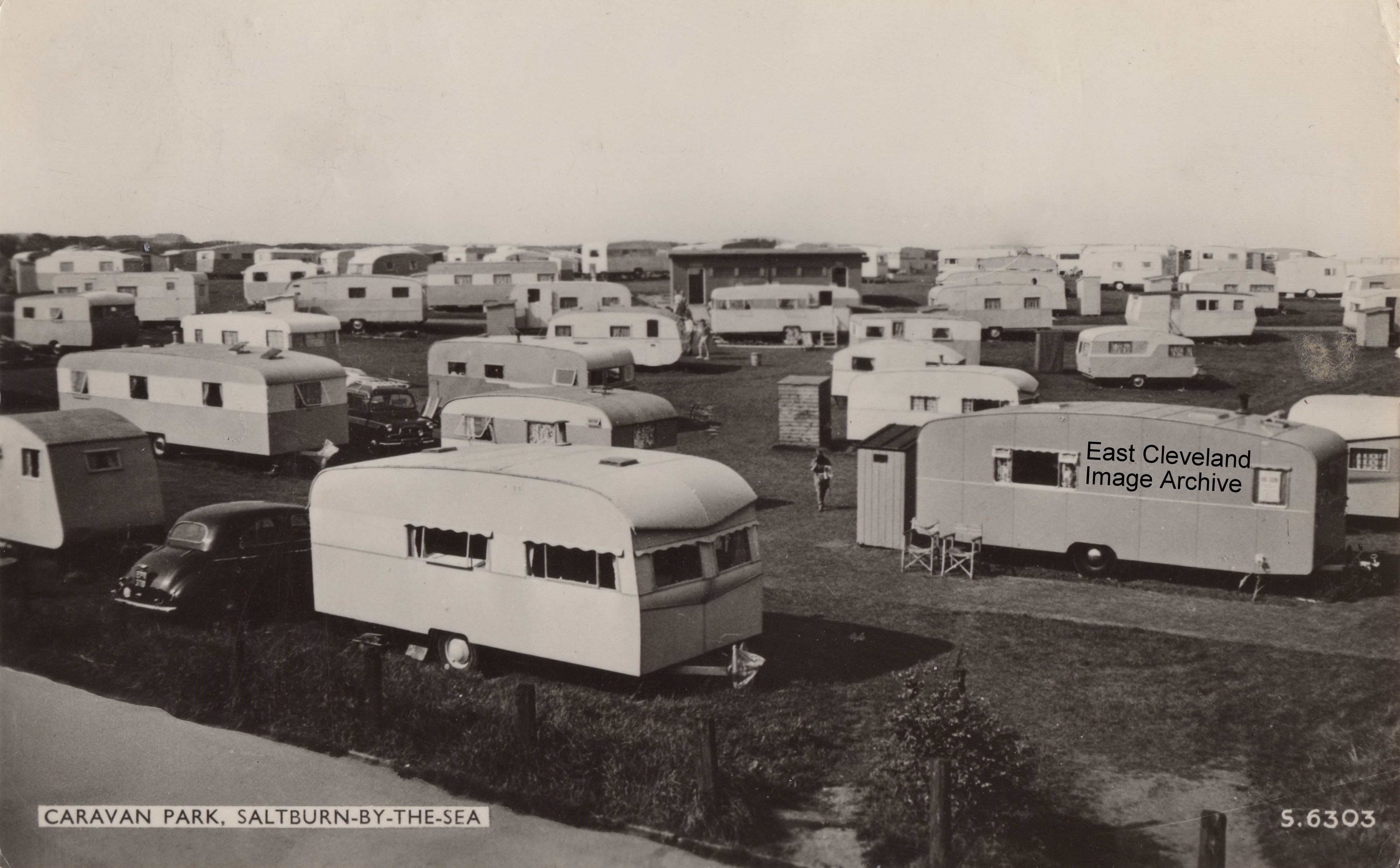
A different view of the caravan park at Saltburn; another Dennis postcard view shows a variety of caravans and towing vehicles with a post mark of September 1966. Obviously some were not touring much judging by their size and little ‘huts’ free-standing beside them. How different to the present day; from the days well before Tingdene with the chalet buildings and large ‘static’ caravans brought to site by trailer, rather than towed in by proud owners. Kenneth Coulthard advises: “I can see our caravan in this shot. Used to visit most weekends whenever schools were closed. Loved it.”
Image courtesy of Julie Tyrka and thanks to Kenneth Coulthard for the update.
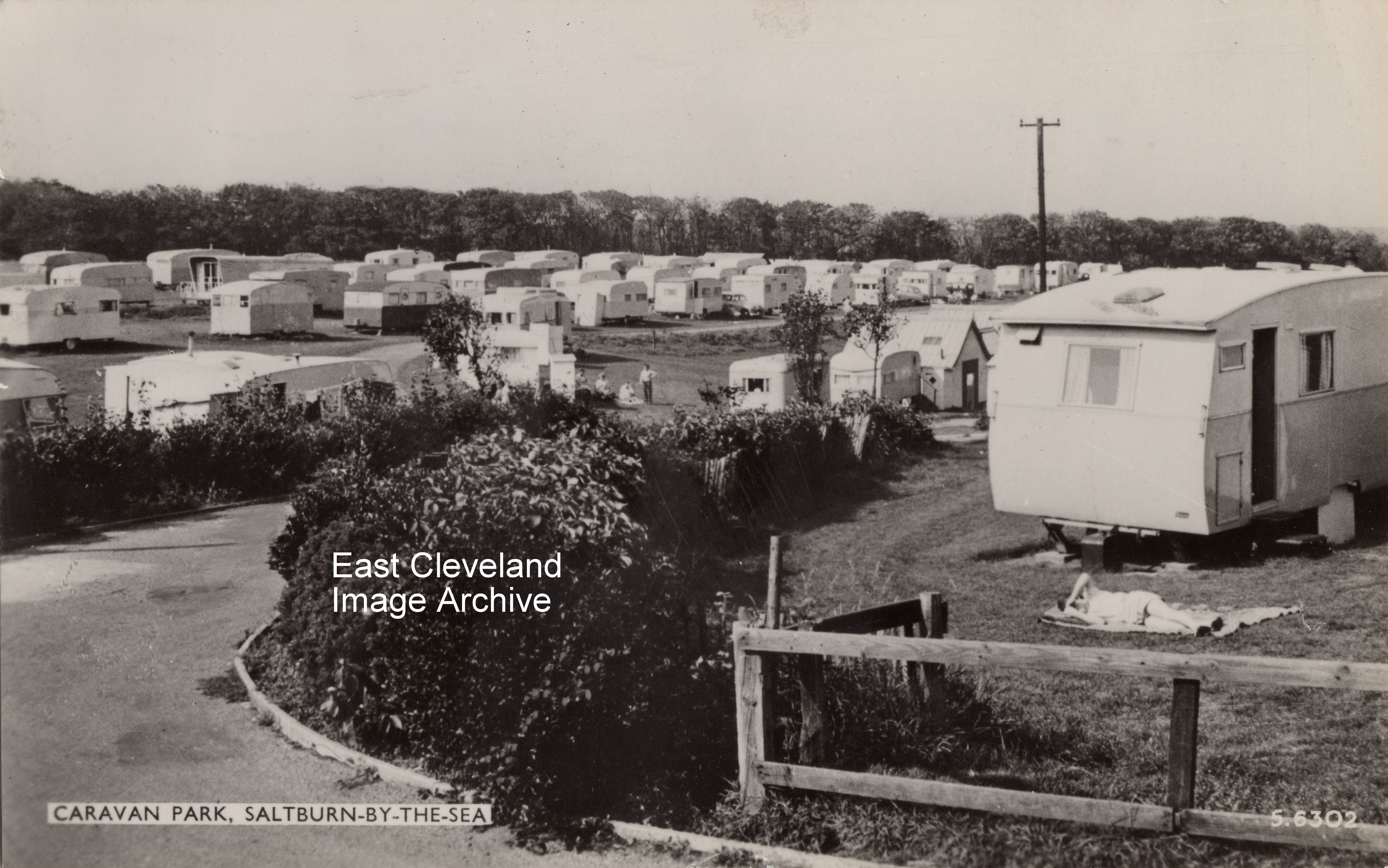
This image of Saltburn Caravan Park in the 1960’s (from a Dennis postcard dated 1966) shows the present day entrance to the Hazelgrove Residential Park with the chalet type buildings. Although there appear to be many almost ‘static’ type of caravans rather than tourers, judging by their size and adjacent structures. Today a very different aspect would be afforded from the same view-point.
Image courtesy of Julie Tyrka.
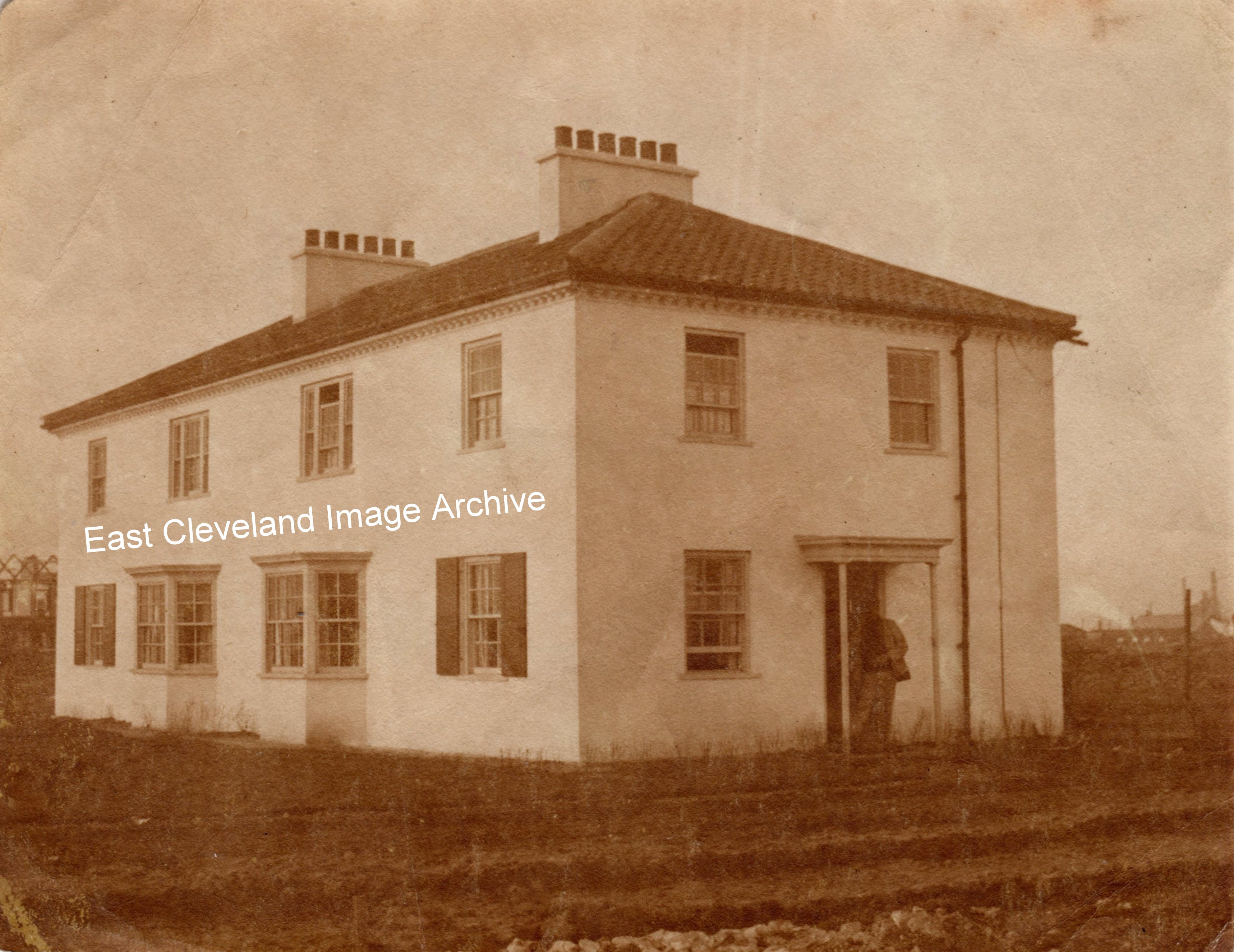
This image has the comment on the reverse: “First complete steel and Hy Rib house” at Dormanstown; known as ‘Dorlonco’,the design was named after Dorman Long the steel company at Warrenby to house the workers for the steel works, they were designed by Architects: Stanley Davenport Adshead, Ramsey and Albert Abercrombie. The builders were Jones and Sons of Westminster and Costain Brothers of Liverpool; Arch Aubrey uncle of Geoff Kitching’s father worked on these houses when they were first being built and evidently took this image. Owing to a shortage of bricks the houses were built with steel frames and clad with concrete, but were modestly elegant affairs in the Georgian style. The first 300 houses were built in two styles: kitchen houses for manual workers and parlour houses for clerical staff; Gas was supplied free to every house. When completed in 1920, Dormanstown housed 342 families. The last of the ‘Dorlonco’ houses were demolished in 1979; the streets of Dormanstown still carry names linked to the builders, Architects and even the steel works manager (Ennis Road; which was the original line for the light railway that was built to carry materials on the 850 acre site).
Image courtesy of Geoff Kitching.
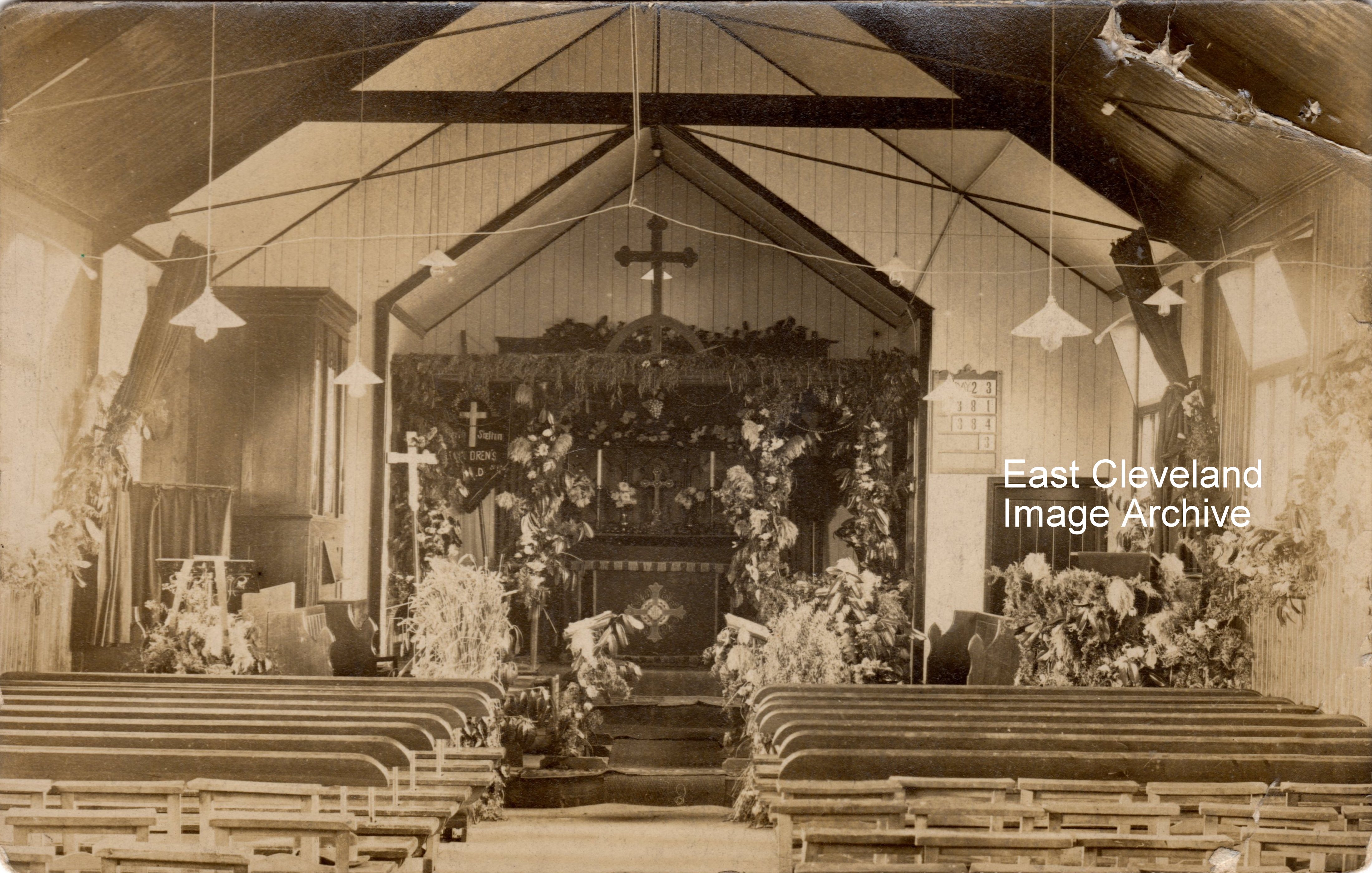
An image believed to be of the interior of North Skelton Wesleyan Methodist Chapel from possibly the 1920s and apparently dressed for a harvest festival or a wedding. The building still stands today and is still used as a place of worship, Geoff Kitching tells us: “The Chapel was corrugated iron on the outside and wood on the inside. My Dad had relatives living just round the corner in Wharton Street in the early 1900’s but he says that they were not Methodists but strictly Church of England.”
Image and information courtesy of Geoff Kitching (son of Bill Kitching formerly of Carlin How).
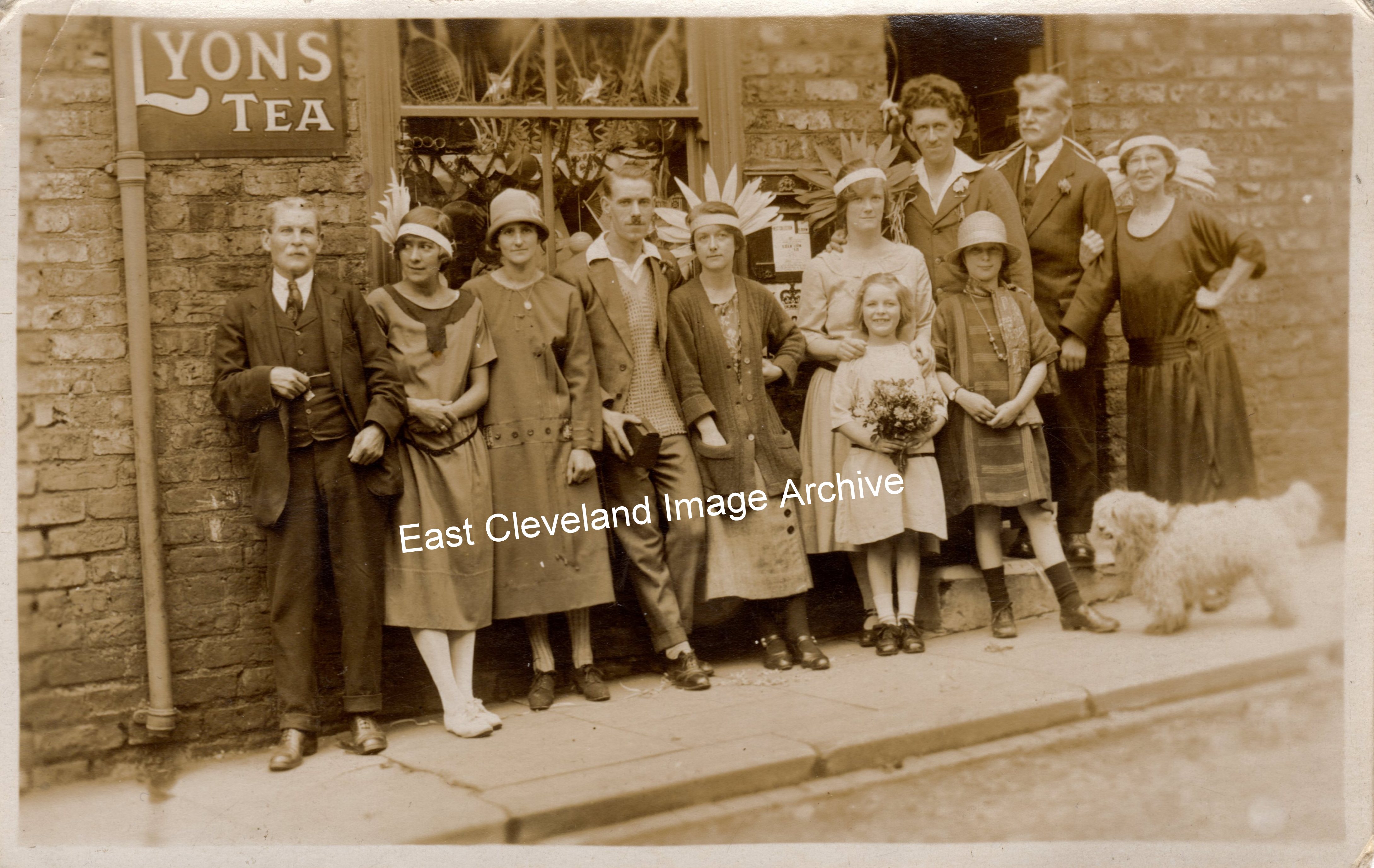
North Skelton Post Office in the 1920s, pictured we have: “The young girl with the flowers is my dad’s sister Sally Kitching and the other young girl is his eldest sister Edie. The post office was run by my dad’s great uncle Bill Young and his wife Bessie who are the two figures on the far right here. The young woman second from the left is dad’s aunt Annie (Smith), next to her is his Aunt Nellie and then Arch Aubrey who was the husband of Annie Smith (they married in 1924). I don’t know what the occasion was. We think the Post Office was at 10 Wharton Street.” The Archive can confirm that William (Billy) Young was Sub-postmaster with his wife Bessie at 10 Wharton Street; they still lived there in 1939. The Archive would again welcome information as regards the possible occasion, especially as all present were obviously celebrating some event.
Image and information courtesy of Geoff Kitching (son of Bill Kitching formerly of Carlin How).
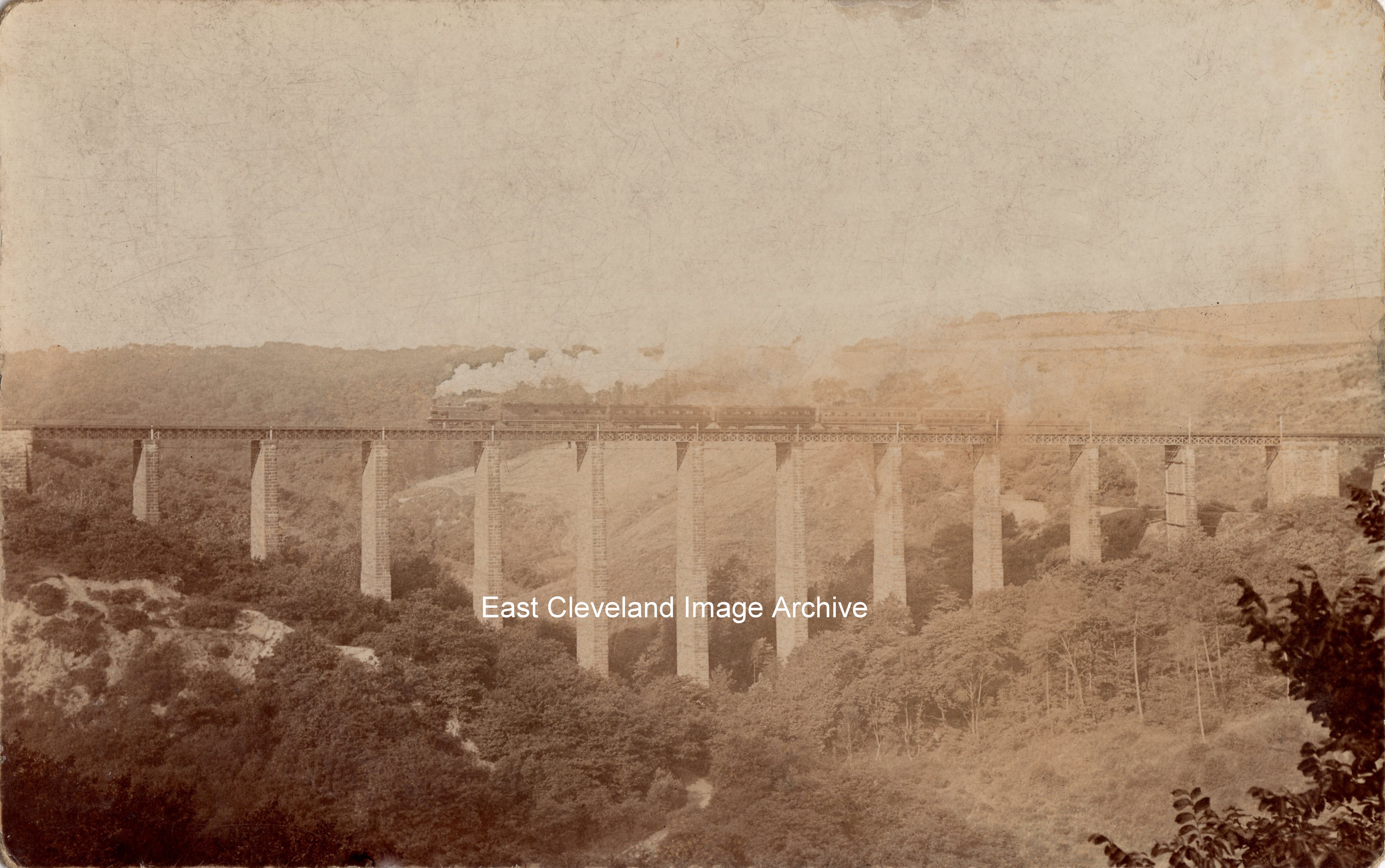
This Kilton Valley Viaduct view comes from an undated and unused postcard, possibly previous to 1905 and the in-filling between the supporting arches. It is possible that the locomotive will give a possible dating and the Archive would welcome any assistance. Geoffrey Allen has responded to our request with:”The locomotive appears to be a N.E.R Class O 0-4-4T (LNER/BR Class G5) it is in Lined NER Livery. These engines were built at Darlington Works between May 1894 and December 1901; 110 in total so a 1905 date is possible. They were used on the Saltburn to Scarborough service and the number of coaches may suggest that this is such a train. Of the six coaches the second to last appears to be an earlier 6 wheel coach, the last of which were built about 1897 all the rest are bogie coaches, the first is a birdcage brake coach and the last may also be the same but the details are obscured. The other 3 appear to be low roofed bogie coaches built from about 1895 to 1906.”
Image courtesy of Julie Tyrka; thanks to Maurice Dower for the update and many thanks to Geoffrey Allen for the excellent update.
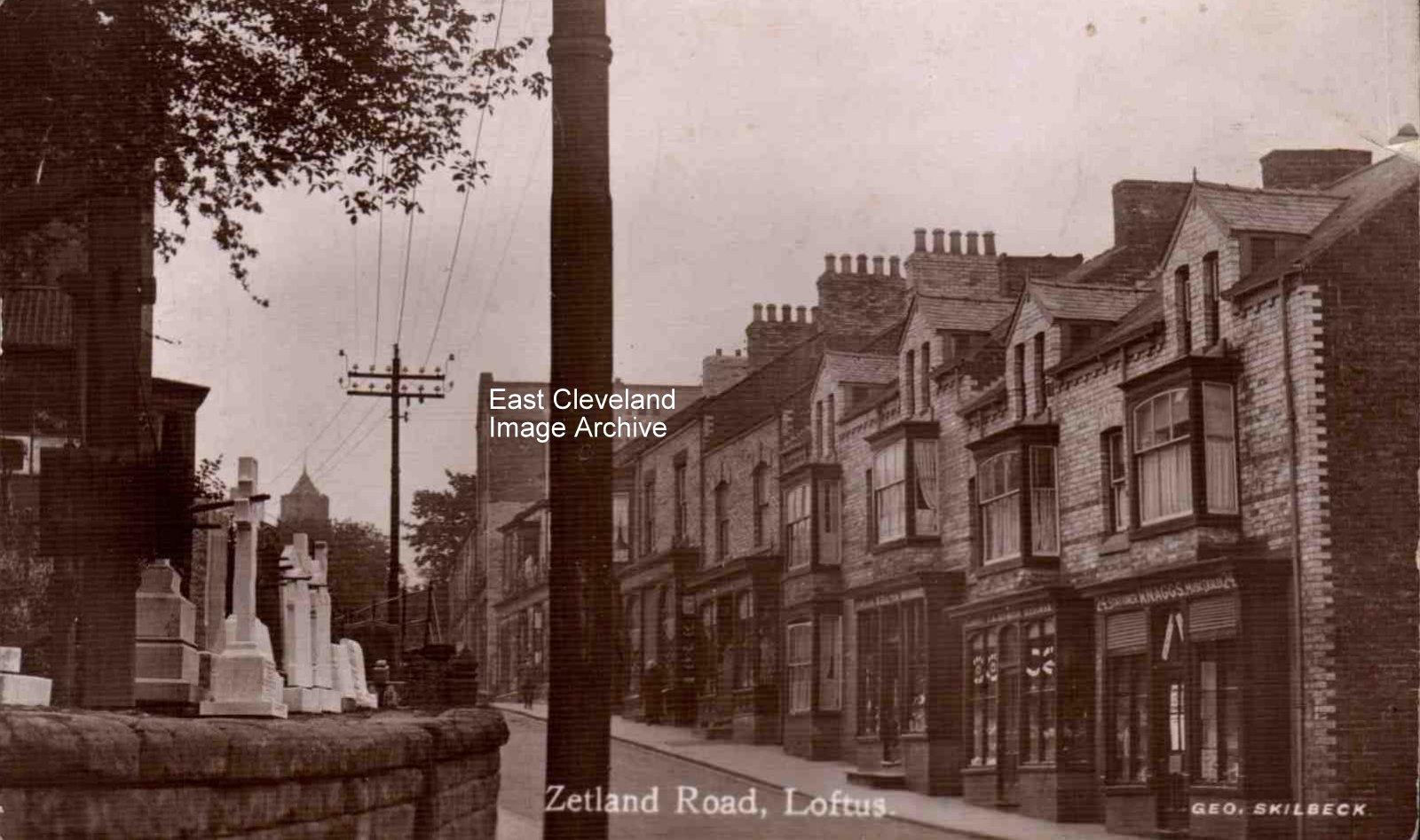
Taken from a George Skilbeck postcard view of Zetland Road, giving an excellent view of both Arrowsmiths memorials on display and the windows of Knaggs shop in the premises in the present day occupied by the Opticians. Can anybody assist with a date for this image?
Image courtesy of John G. Hannah.
This postcard image of ‘Chocolini’s’ corner in modern-day Saltburn is believed to show the Peace Celebrations at the end of the First World War; based upon the variety of flags, Boy Scouts being present and numbers of uniformed persons present. Researches have indicated that the Vicar of Emmanuel Church, Saltburn from 1913 till 1925 was Arch Deacon T. E. Lindsay; from photographic evidence now available to the Archive he would appear to bear a very strong resemblance to the Vicar conducting the proceedings on the corner of Windsor Road and Albion Terrace. Further information having come to the Archive indicates the electrification of the street lights (an incomplete light features in the foreground of the image) was completed by 1919, the Archive now has a postcard dating from September 1920 showing this street light completed. But the Archive would welcome comments, supporting evidence or further information.
Image and information courtesy of Geoff Kitching, additional information courtesy of Emmanuel Church Centenary Magazine 1967.
Eamann O Ruairc tells us: “The man standing in front of it is my grandfather, Michael (Mick) Magee. He began working as a driver, but since he was a very skilled mechanic (he had served his time as a motor mechanic and had spent World War I as a driver in the Army Service Corps on the Western Front) he was soon put to work as a mechanic in the depot in Dormanstown. During his stay in Redcar; Mike became deeply involved in trade unionism and in socialist politics. At some point he became the chauffeur of a Fabian MP. Whether this was a full-time job or a part-time one I do not know. Mike may have worked for the Transport Workers Union and was also very active in the organisation of the 1926 general strike. In 1930 he emigrated to Detroit where he became a key figure in the trade unions in the Ford factories”. Craig White tells us: “Looks like Redcar Lane Cemetery chapel in background , so this would be Thwaites Lane running up to the Racecourse stands”.
Image and information courtesy of Eamann O Ruairc; Eamann is also seeking further information about United Bus Company in Redcar in the early 1920s. Thanks to Craig White for the update regarding location of this image.
A postcard view of the Tivoli Cinema at Carlin How; the day after the fire! It obviously collected a number of sightseers and mostly young people judging by this view of the day after; the Archive has been advised by Bill Kitching “the Tivoli was left derelict after it burned down and was actually still in use before the fire; it was effectively the community centre and had theatre productions as well. He and other kids would later play football in the space it used to occupy. In this photograph there is a small group of three men in the foreground on the left in front of a post. The slightly shorter man on the right with his hand in his pocket is my fathers’ father Joe Kitching who worked at the pit and the man to the left of him with his hands together was a Mr Bayfield who was the horse-keeper at the pit.”
Image and information courtesy of Bill Kitching via Geoff Kitching.
|
|







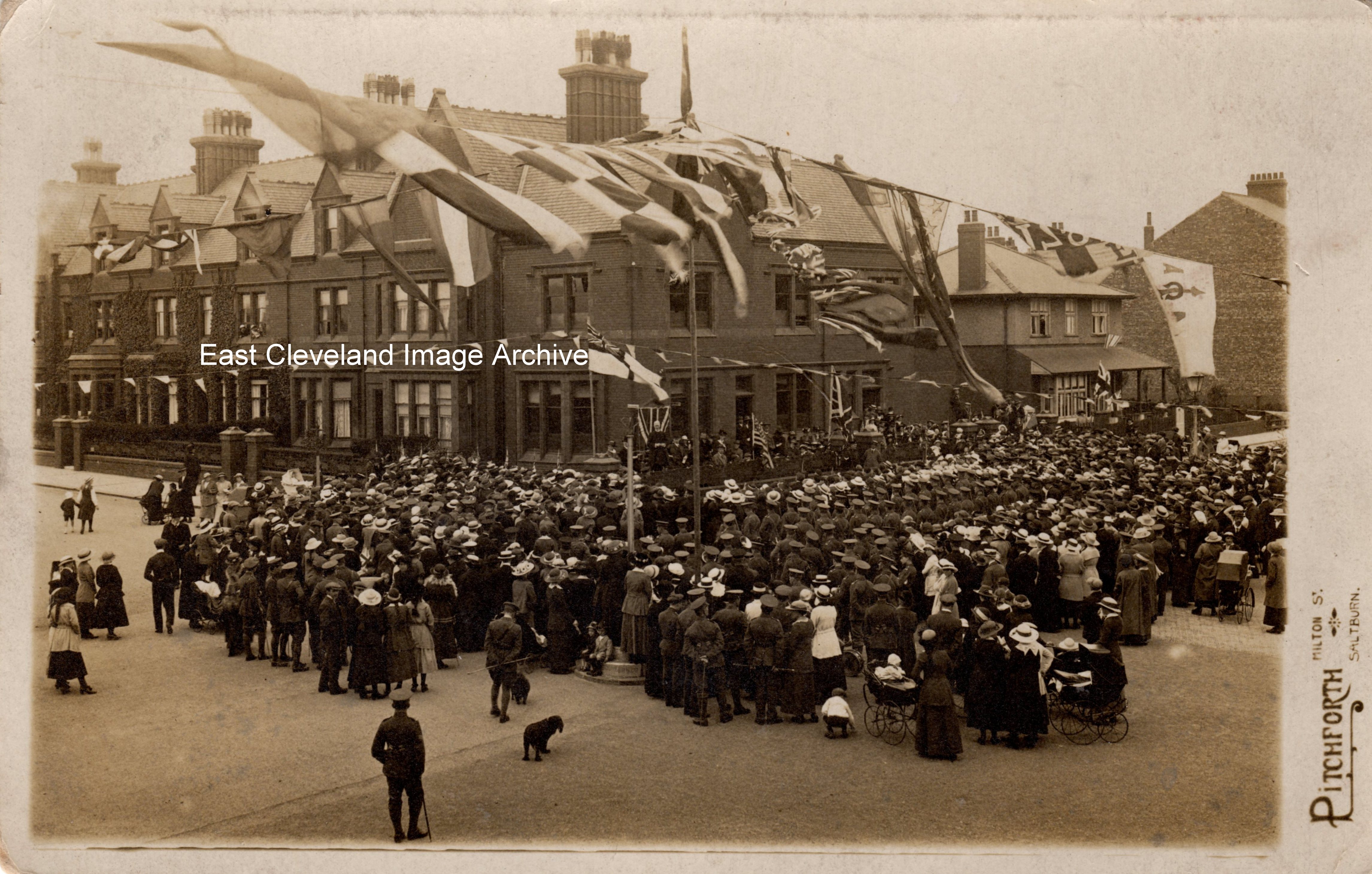
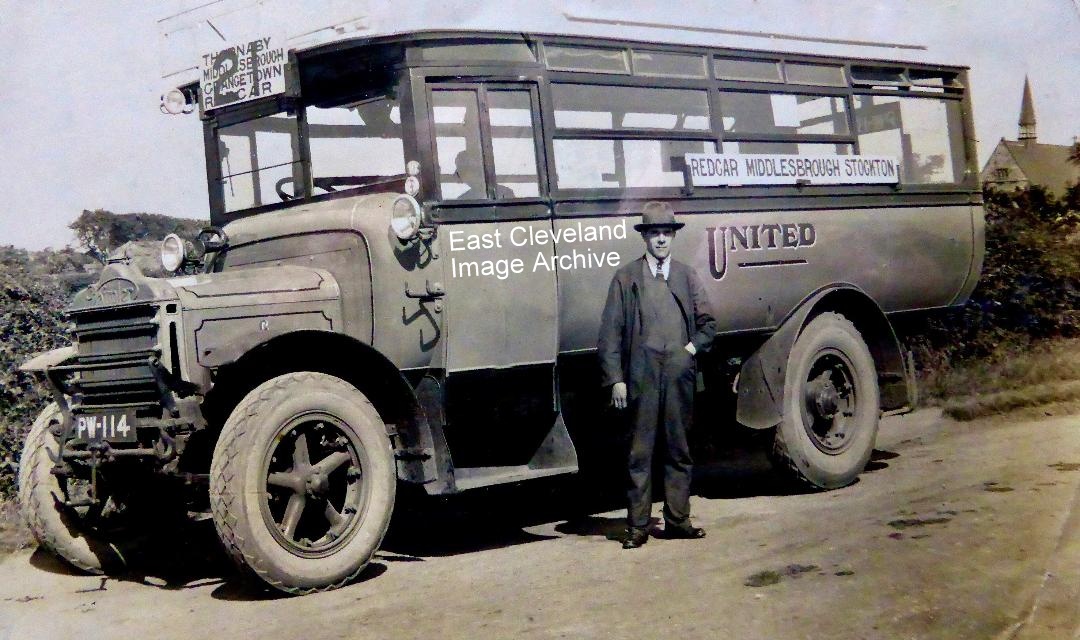
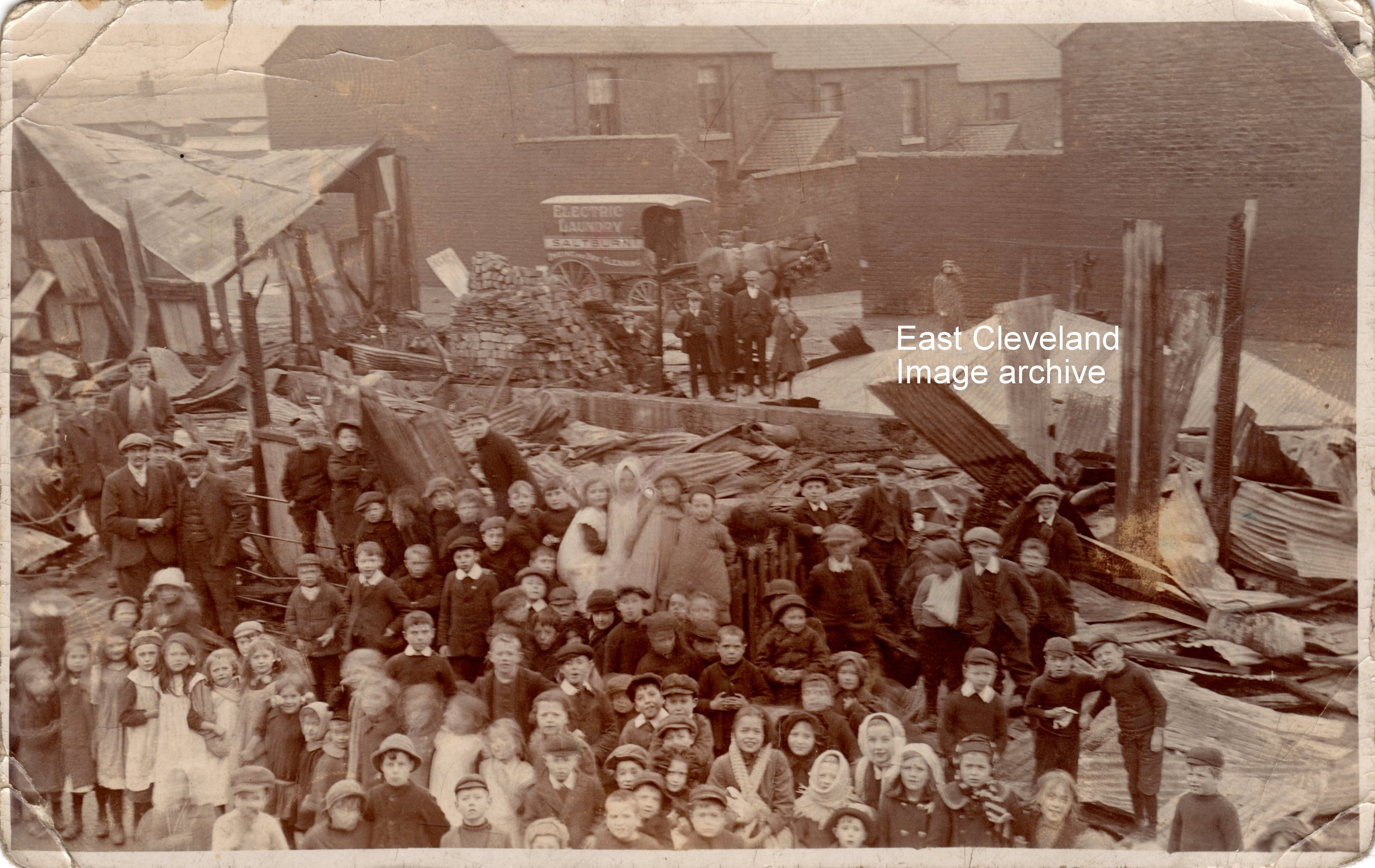
Recent Comments